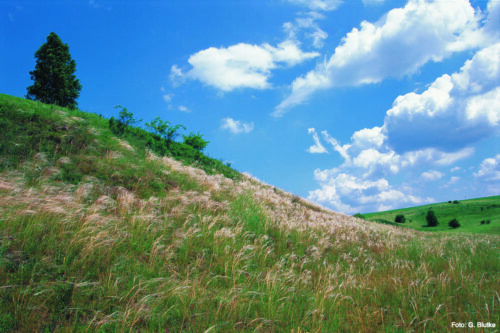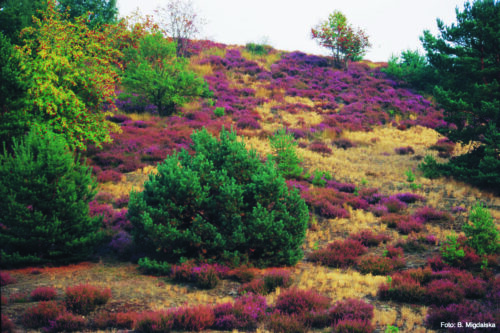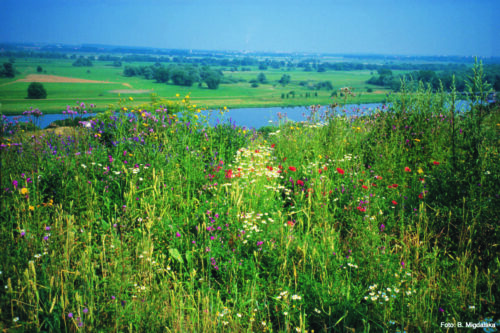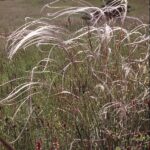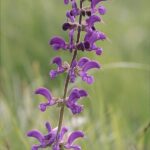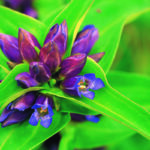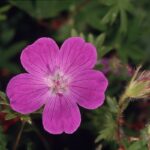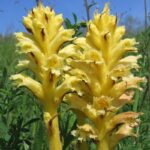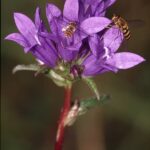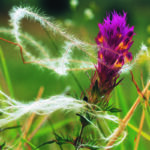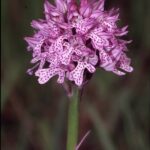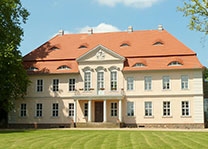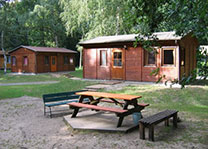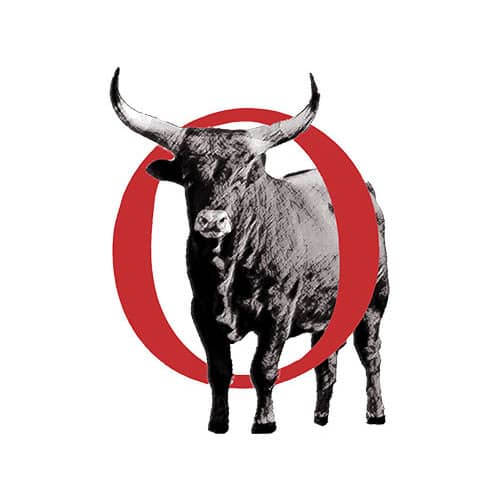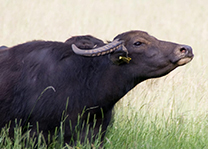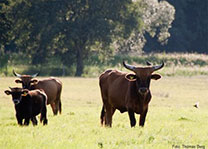The xeric grasslands in the lower Oder valley go back to human economic activity. They emerged when pasture areas were created in the High Middle Ages, often after deforestation on the valley slopes or on the edge of the Oder valley. Despite the history of its origins, which was strongly influenced by humans, we find extremely rich and interesting habitats here, which are home to many, especially floristic rarities. The xeric grasslands is subdivided according to the type of soil into sandy dry grassland on sandy and steppe dry grassland on loamy soils.
- Xeric grasslands
- Xeric grasslands with heather
- Colorful wildflower meadow
Sand xeric grasslands
Dry sandy grasslands are widespread throughout the lower Oder Valley, even on higher-lying locations in the actual Stromtalaue, which may be surprising at first glance. As a result of the floodplain dynamics and their interplay between sedimentation and erosion, dry sand grassland is also found on the sandy areas sedimented in the polder area, on which the yellow inflorescences of the felty butterbur (Petasites spurius) stand out. Later a number of the small, rare hornwort species bloom here (Cerastium dubium, Cerastium pallens, Cerastium brachypetalum). In summer there is silver grass (Corynephorus canescens) and Tatar catchfly (Silene tatarica) before. When these sites solidify, a heather carnation lawn develops.
On the heights there are different types of dry sand grassland where fescue species (Festuca trachyphylla, Festuca psammophila, Festuca polesica) play the main role among the grass species. There are also different species and subspecies of feather grass (Stipa joannis, Stipa borysthenica) and are a magnificent sight in early summer with their long, hairy awns. Rare herbs such as the two species of cucumber (Silene otites andSilene chlorantha), the adder’s head hawkweed (Hieracium echioides), the Carthusian carnation (Dianthus carthusianorum), the yellow tooth grid (Orthantha lutea), the Siberian bellflower (Campanula sibirica) and many others complete the picture and mark individual associations.
- Feather grass on Geesower Hill
- Meadow sage
- Cross gentian
- Blood-red cranesbill
Arid steppe grassland
The dry steppe grasslands in the national park are particularly important in terms of flora and nature conservation. While the feather grass steppe with the awl grass (Stipa capillata) still offers a relatively monotonous picture, the meadow steppes near Geesow, Gartz, Stützkow, Gellmersdorf, Stolpe or Stolzenhagen can be compared more with wildly flowering gardens than with the usual plant communities.
The light blue flowers of the wire-haired violet (Viola hirta) a strong contrast to the yellow cushions of flowers of the sand cinquefoil (Potentilla arenaria), which will soon be supported by the strong white flowers of the Great Anemone (Anemone sylvestris) and the white cinquefoil (Potentilla alba) are interspersed. Simultaneously with the development of the dominant pinnate-twins (Brachypodium pinnatum) or the pretty quaking grass (Briza media) open the inflorescences of the grass lilies (Anthericum ramosum), the blue towers of the meadow sage (Salvia pratensis), the colorful flower spots of the clover species (Trifolium montanum, Trifolium alpestre) or the deep blue flowers of the Great Braunelle (Prunella grandiflora). Long stalks with the purple inflorescences of the purple salsify (Scorzonera purpurea) are in several places through the pink to red flower clusters of the three-toothed orchid (Orchis tridentata) added. The rare summer root species (Orobanche vulgaris andOrobanche lutea), which are tied to certain host species as full parasites. There are Orobranche lutea B. only where the sickle alfalfa (Medicago falcata) grows. Different types of bluebells also begin (Campanula glomerata, Campanula cervicaria, Campanula bononiensis) with their floral flowers, which often last until late autumn. The flower groups of the blood-red cranesbill often grow en masse on the edges of the bushes (Geranium sanguineum).
With its dark blue flower clusters, the cross gentian (Gentiana cruciata) the floral midsummer and leads over to the autumn flora. Then individual parts of the slope look yellow when the inflorescences of the golden-haired aster (Aster linosyris) or the common goldenrod (Solidago virgaurea) appear, which are then often taken from the deer root (Peucedanum cervaria) are towered over. But this is only a small part of the biodiversity of these locations.
- Yellow arum
- Clump bellflower
- Field quail wheat
- Tridenty orchid
The plant species in the national park, which are mostly threatened with extinction, can also be found on the dry grassland. The national park has a special floristic responsibility here. However, dry lawn maintenance is not easy and expensive. In many places unkempt, that is, dry lawns that are no longer grazed, are threatened by bushes and also affected. In order to change things for the better, grazing in compliance with nature conservation must first be ensured. With the provisional assignment of ownership as part of the corporate land consolidation in 2013, practically all dry grassland areas in the national park have become the property of the national park association. This made it possible for the National Park Association to implement a coherent and sustainable management concept. Since then, all of the dry grasslands have been leased to a shepherd for a small lease. A few areas are also grazed by donkeys or light horses such as Koniks. Grazing with light cattle is also possible and has been tested. The alien alpacas (Vicugna pacos), as they do not cause any damage or even Eurasian half asses like onagers (Equus hemionus).
Since the continuous grazing, the condition of the dry grassland has improved. First, however, de-bushing measures had to be carried out, which were initially also supported by the David Nature Conservation Foundation. Also volunteers of the nature conservation association Schwedt / O. are always active here, for example in the Müller Mountains and in Höllengrund.
Flaming has also been tried out for a number of years. In the spring, the excess grass is burned off in a controlled manner. This is a natural process in the wild and can be caused by lightning strikes. After the wintry “flaming”, the fresh green can better shoot into the weed. However, it is very complex, requires long preparation and good coöperation with the local fire department. The first successes can already be observed on the burned-down areas, the orchid orchid (Orchis militaris) has increased significantly.
Dry lawn care is a focus of the Brandenburg Academy, which regularly organizes conferences on this topic. The lectures held here will be published in the National Park Yearbook Lower Oder Valley.
Further reading
More information on the subject of xeric grasslands can be found in the book “Der Internationalpark Unteres Odertal — Ein Werk- und Wanderbuch” (VÖSSING 1998, Stapp Verlag Berlin, p. 39 f).



